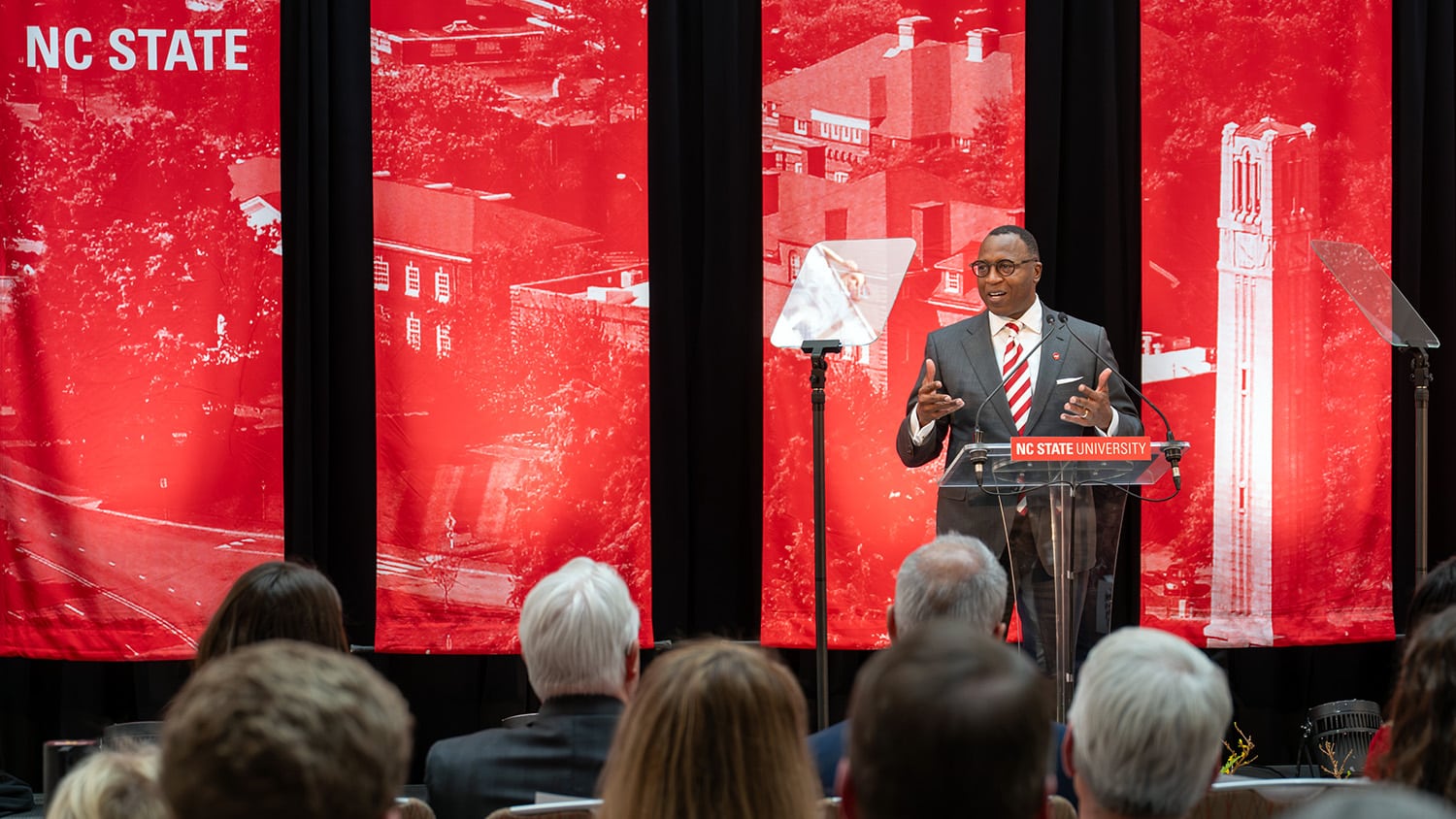Lending a Hand
For most college students, end-of-the-year projects are fraught with worry. But if you came across the group of textile engineering students presenting their senior design projects last week, the atmosphere was more celebration than stress.
For the past year, the students have worked in teams to create prototypes of products designed specifically for people with disabilities. They partnered with local members of the disabled community to determine textile solutions for problems facing those with disabilities – from a more comfortable wheelchair to a new shoe-tying system. And to come up with solutions, many students got a hands-on research experience.
“Since I’m not a wheelchair user, I wanted to spend some time actually using one so I had a better idea of the issues the wheelchair-bound face,” said Brett Faircloth, a senior in textile engineering whose group developed a new wheelchair design. “After riding around in one for a full day… well, let’s just say my arms were pretty sore.”
Faircloth’s team, which included classmates Alicia Allen and Michael Johnson, developed what they described as a “more modern and moveable” wheelchair. The actual seat of the wheelchair was developed using a Herman Miller Aeron desk chair that Dr. Jon Rust, head of the Department of Textile Engineering, Chemistry and Science, jokingly swears was stolen from his office.
“People sit in desk chairs for eight-plus hours a day. A lot of research goes into making sure they are comfortable and useable,” Allen said. “We figured that was a good place to begin with our wheelchair design.”
And that wasn’t the only redesigned wheelchair. Another group of students designed a new sports wheelchair – one that has the ability to wick away sweat, keeping the chair cool and dry. The students started their research by actually playing a wheelchair basketball game against a group of players from Raleigh’s Triangle Thunder wheelchair basketball league.
“We got crushed,” one student recalled.
The prototype presentations were the culmination of a year-long project done in an upper-level textile engineering course. The idea to design products for people with a variety of disabilities came from a partnership with the Textile Products for People with Disabilities (TPPD) program – a recent venture developed by Dr. Kate Carroll, assistant professor of textile and apparel technology and management.
Other projects – such as a “button eater” that allows people with limited hand mobility to easily button their shirt with one hand, and a redesigned shoe buckle that allows stroke victims to open and close their shoes with the push of a button – were also on display. Both teams boasted that their products could be used on top of everyday apparel.
Some projects, such as the sensing vest that assists the visually impaired with walking by providing discrete vibrations when an object is in its path (a safe alternative to cane navigation), were tested by a smiling James Benton, who chairs the Mayor’s Committee for Persons with Disabilities in Raleigh.
Benton, who is legally blind, walked from station to station talking with all the students about their projects – many of whom he has been in contact with since the beginning of the year.
“The feedback from people like James Benton was really invaluable. He made us think about some things we hadn’t considered,” said Kenneth Ryan, a student on the “sensing vest” team. “He kept us motivated to create a product that could really be used.”
Benton spent a long time reviewing one group’s bowling assistant rail – designed to be cheaper, lighter and more durable than traditional rails. Benton, an avid bowler, laughed with students Ryland Clark and Oliver Blasberg about his upcoming bowling competition – which both students seemed genuinely interested in attending.
When asked about what it was like working with students on their projects, Benton beamed as he spoke about their ingenuity, compassion and intellect.
“These were a great group of students to work with,” Benton said. “I give credit to them and their parents, but also to NC State. This is a testament to the kind of university NC State is. The people here really care about helping others – and you can see that through these projects.”
- Categories:


